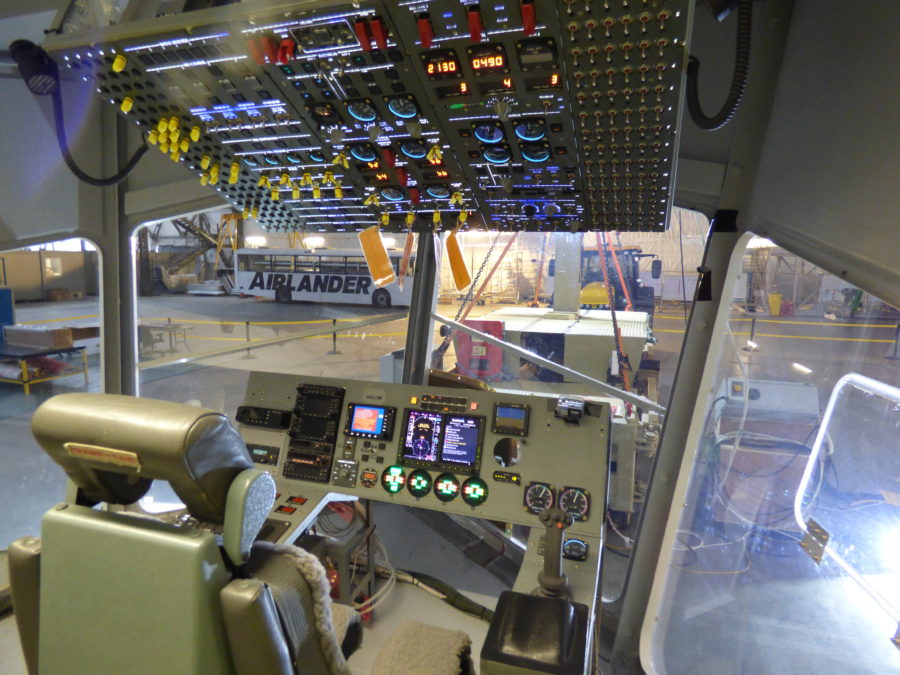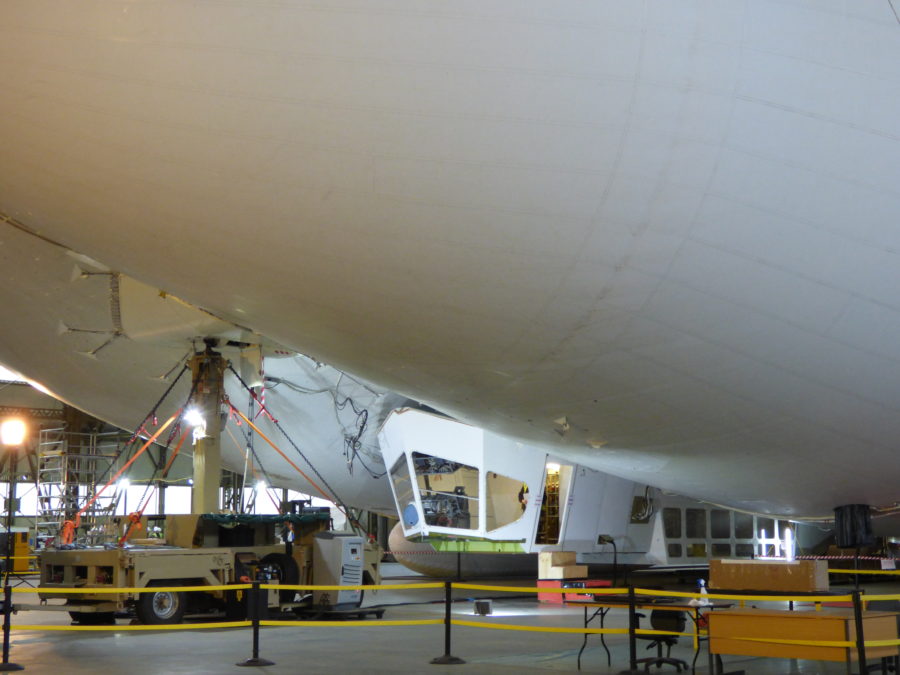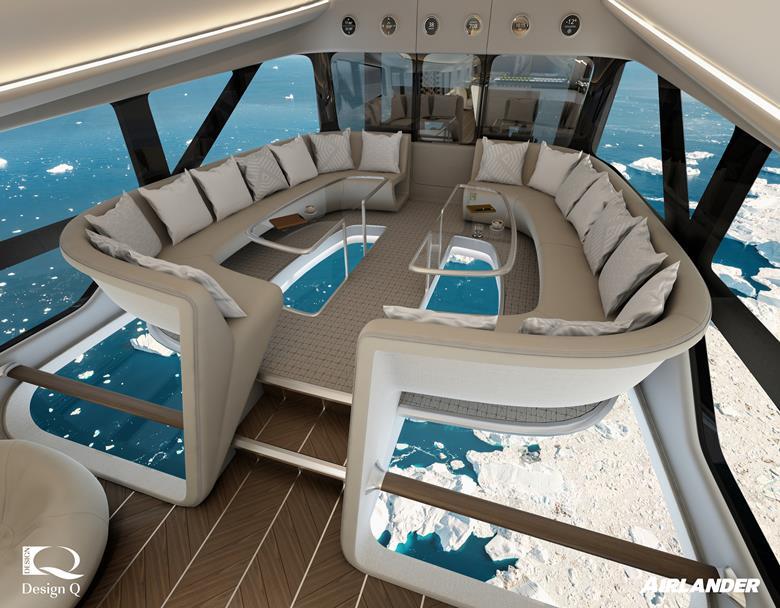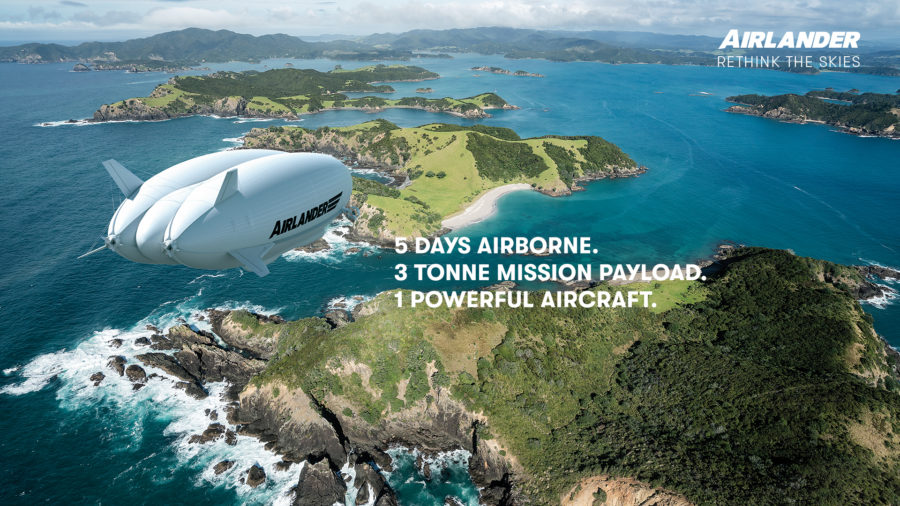Production of the world’s largest hybrid airship will begin this year with a model designed for commercial use. UK-based manufacturer Hybrid Air Vehicles (HAV) that created Airlander 10, has received approval from the Civil Aviation Authority (CAA), and company officials hope that their innovative airship will take to the skies in early 2020s. Meanwhile, Airlander 10, built to test the concept, was retired after accomplishing six test flights.
The world’s largest and futuristic aircraft, Airlander 10, combines the characteristics of a plane and helicopter with lighter-than-air technology. Filled with the safe and non-flammable gas helium, it is as tall as a nine-story building and almost the length and breadth of a football field. It can stay airborne for up to five days at a time and could be used for surveillance, communications, and transportation of passengers and cargo. Moreover, the mission and operations could be achieved from door-to-door, even in remote areas with no runway or infrastructure.

As 2018 came to a close, HAV received certification from all air authorities, including the Design Organization Approval from the European Aviation Safety Agency (EASA) and a Production Organization Approval from the Civil Aviation Authority (CAA). “[The POA] demonstrates that the safety, quality assurance, and supply chain management processes are in place, along with the production facility,” said David Lindley, HAV’s Head of Aviation Safety & Quality Assurance.
The airship will be able to fly up to 20 passengers and can reach destinations inaccessible to other conventional means of transport. Airlander’s first test flight took place on 17th August 2016, from Cardington Airfield in Bedfordshire, UK. Over the course of two years the prototype completed six test flights, suffering two mishaps. On its second flight, after staying aloft for 100 minutes, the 302-foot long aircraft slowly nosedived, and landed heavily crashing its cockpit, but the two test pilots and ground crew were reported alive and well. The crash led to a nine month of assessment and repair phase, which brought in a more powerful and more maneuverable Mobile Mooring Mast (MMM), and the additional “inflatable landing feet” of the Auxiliary Landing System (ALS).

The impressive blimp-shaped airship returned to the skies in May 2017 and flew for three hours. Then on 18th November 2017, the aircraft had another accident. It broke free from its mooring and ended up in a deflated and ripped heap on Cardington airfield. The deflation is a result of the safety feature which kicks in when the aircraft breaks free of its mast. Following the incident, HAV released a statement that the craft sustained “substantial damage” when it “detached from its moorings in light winds” and two people suffered minor injuries. The statement further read: “We are testing a brand-new type of aircraft and incidents of this nature can occur during this phase of development. We will assess the cause of the incident and the extent of repairs needed to the aircraft in the next few weeks.”

After analysis, HAV filed for £32 million in insurance claim, which it said was the “maximum insured value,” but received £20 million payment from the insurers for the “very significant damage.” The prototype could no longer be used as a “test article and sales demonstrator.” “While the incident and its effect are disappointing,” said HAV’s CEO Stephen McGlennan “they do not take away from the fact that the company is now better positioned than ever to deliver production-standard aircraft to its global markets.” According to McGlennan, the test model served its purpose as the world’s first full-sized hybrid aircraft and provided the necessary data to move forward from prototype to production-standard. “As a result, we do not plan to fly the prototype aircraft again,” said McGlennan.
HAV also has plans to use Airlander for luxury travel and adventure. Almost noiseless, the new breed, of environment friendly airships, promises to offer a unique and luxurious, sightseeing experience as it floats 1000 to 3000 feet above the Earth’s surface. So when can we expect to see Airlander flying again? “Look for many, many Airlanders flying again, ready to be delivered to customers and used around the world,” says McGlennan. And despite its seemingly vulnerable appearance, it’s very safe. “You can put 500 machine gun bullets through the aircraft, and it can still happily carry on,” says HAV’s Executive Director Nick Allman. — by Sitara Maruf









I would like to receive future information about this airship as it becomes available. I’m using the data for a novel i’m writing. Thanks